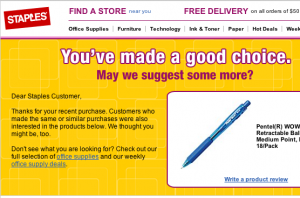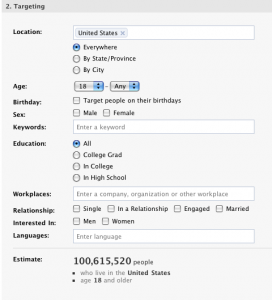The Program
I got an email this morning from Paul Geffen, a member of our Boston Area Startup Marketing Group (which, by the way, isn’t dead….more on that very soon). He wanted to let the group know that the Founder Institute and Entrepreneurship Program is coming to Boston.
A little more info:
TheFunded Founder Institute, a four month program to help founders build the next generation of world-class technology companies, is launching a new semester in Boston from July, 2010, until October, 2010. The program is run by founders for founders, providing a structure for successful entrepreneurs to share their experiences and to provide guidance. If you have a new company or if they are thinking to start a company, we encourage you to apply to the program.
We’ve already lined up great Mentors for Boston, including;
- Phil Libin, CEO, Evernote
- Craig Kanarick, Cofounder of Razorfish
- Dharmesh Shaw, Cofounder of Hubspot
- Dan Shapiro, CEO of Ontela
- Eric Melin, CEO of Philanthropist.org
- Stephen Hau, CEO of Sharable Ink and Patientkeeper
- Doug Brenhouse, Cofounder of Metacarta
- Ryan Alfred, Cofounder of Brightscope.com
- Roger Yee, Former CEO of ShadowLogic
- Matt Johnson, CEO of OmniStrat
- And more…
The deadline for applications for the Boston course is June 23rd. Please see
http://www.founderinstitute.com/apply/23/mu_php for more details and an application form.
What’s Interesting
I sent a message to all the members of the meetup group, and emailed a few questions back to Paul.
Me: How much does it cost?
Paul Geffen: The cost of the course is as follows (you can also find this info on the web site )
- First, Founders pay a $50 Application Fee to cover the costs of reviewing and testing the prospective entrepreneurs.
- Next, Founders accepted into the program contribute a $600 Course Fee to cover location fees, catering, mentor travel, and other expenses of running a 16 week program. The Course Fee is calculated by dividing costs by the expected number of accepted Founders.
- Third, if a Founder graduates from the program, they are asked to contribute warrants for 3.5% of their company priced at fair market value into a Bonus Pool that is shared between the other Founders, the Mentors, the local operators, and the Institute. 30% of the Bonus Pool returns goes right back to the Founders themselves, allowing each graduate to earn returns based on the success of their peers. Enrolled Founders can drop out at any time and avoid joining the Bonus Pool.
- Lastly, if a company is successful and receives financing from third parties, the Institute asks that the company pay a one time Tuition of $4,500, which supplies the operating capital for the Institute.
Me: How long has the Founder Institute and this course been around?
Paul Geffen: The history:
The Institute is funded by Adeo Ressi, a serial entrepreneur and Founding Member of TheFunded, Incorporated. The idea for the Institute began in January, 2009, as a way to help Founders avoid common mistakes that lead to the failure of a business. In February, Topicki was launched as an interactive curriculum builder for the sessions, and hundreds of CEOs contributed ideas on what Founders need to know. On March 3rd, the story was leaked to TechCrunch, forcing the Institute to move quickly on plans. The company was incorporated on April 16th, 2009, using the same documents offered to the public and to the participating Founders one day before accepting applications.
The Institute is currently running in ten cities. This is the first Boston course – we have already graduated founders in the other nine cities, including:
- SF Bay Area
- Denver
- San Diego
- Singapore
- Paris
- LA
- New York
- Washington, DC
Me: Any success stories to share?
Paul Geffen: Some of our graduates are listed here: http://www.founderinstitute.com/companies
Me: When is the entry deadline?
Paul Geffen: The application deadline for Boston is June 23rd.
I really like the idea, and the stable of startup CEOs and founders is pretty insane. I’d apply in a second, but since I’m not a co-founder and can’t commit a percentage of the company into a pool, I won’t be able to do this. But, I took a look at the application, and it’s really interesting.
Two things on the application:
- A LinkedIn profile is mandatory, and must be 85% complete with at least 1 recommendation and at least 10 connections
- There’s an optional field asking you to introduce yourself, your passion and your idea in a 120 second YouTube clip
Very cool.
{ 3 comments }
 Subject: When they ask about access to sensitive data, just hand them this.
Subject: When they ask about access to sensitive data, just hand them this. Or so I was told by an IT manager that works with us as a design partner. This is why we’re excited about the new Aprigo NINJA release from yesterday that adds the following capabilities:
Or so I was told by an IT manager that works with us as a design partner. This is why we’re excited about the new Aprigo NINJA release from yesterday that adds the following capabilities:







 Last night I attended the Boston Web Innovators meeting and loved the breakout panel “An Entrepreneur’s Guide To Bootstrapping PR” with
Last night I attended the Boston Web Innovators meeting and loved the breakout panel “An Entrepreneur’s Guide To Bootstrapping PR” with  On Wednesday July 22nd the second meeting of the
On Wednesday July 22nd the second meeting of the